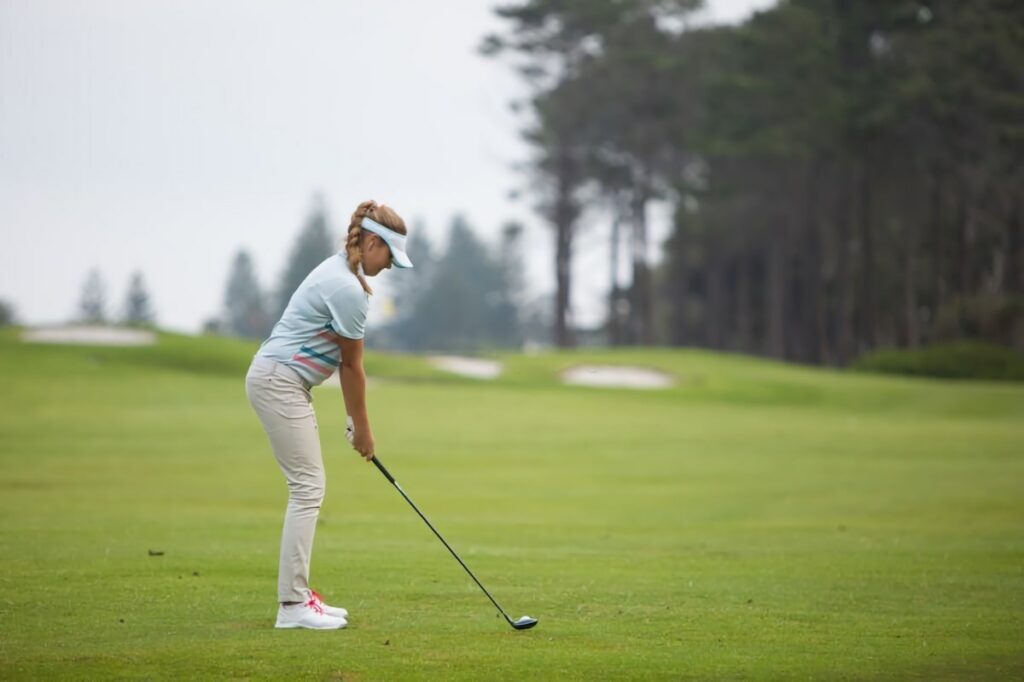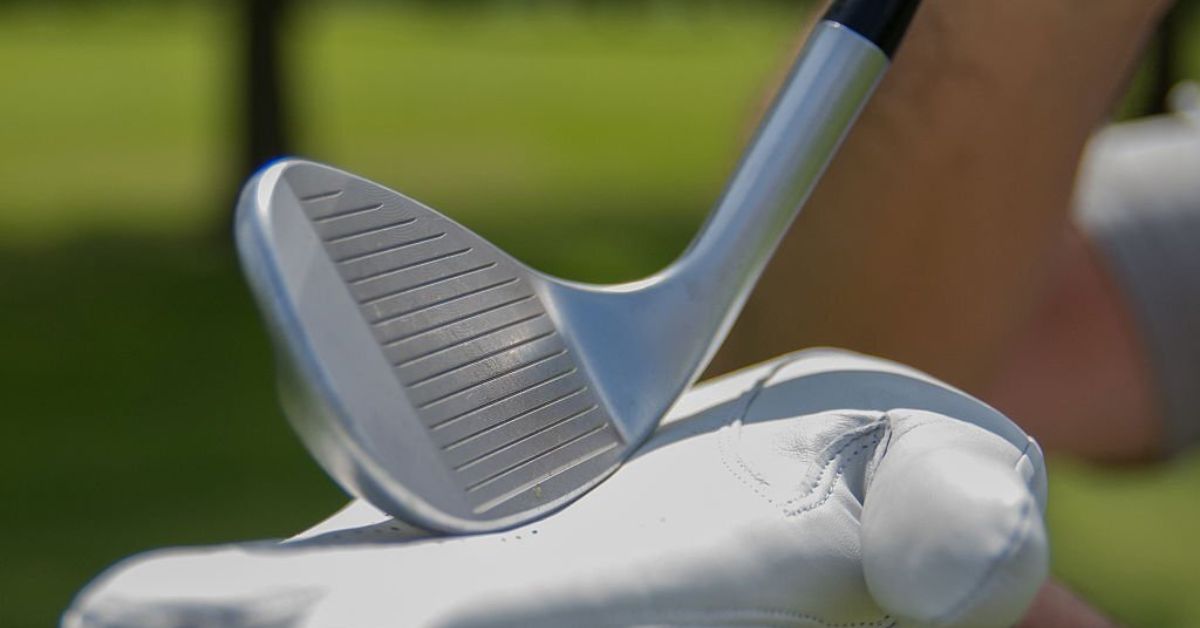Distance control plays a vital role in your success when playing golf.
The amount of loft a golf club has is directly correlated to how far the ball will travel. So, knowing your approximate yardage for every club is essential for scoring well.
The question is — how much does 1 degree of loft affect distance?
In this article, you’ll learn how much 1 degree of loft affects distance. Also, I’ll share the average loft and distance of each club in the bag, for both male and female golfers.
Ready? Let’s go!
How Much Does 1 Degree of Loft Affect Distance?
In golf, a change in loft of 1 degree will affect a club’s distance by 2 to 4 yards. For instance, the average difference in loft between an 8 iron and a 9 iron is 4 degrees. So, the difference in distance between clubs is approximately 10 to 15 yards.

Club Loft Explained
Before we go into detail on the relationship between loft and distance, it’s important to understand the definition of loft in the context of golf.
Loft — or loft angle — of a golf club is the measurement, in degrees, of the angle of the clubface in relation to the ground.
Not only does the loft of the clubface help get the ball in the air and traveling towards the target, but it also has a direct influence on distance.
How Does Loft Affect Distance?
The loft of a club has a direct impact on the distance the ball travels. The lower — or stronger — the loft, the further the ball will go.
Drivers have the lowest amount of loft, with around 10 degrees, and are designed to hit the ball the furthest. At the other end of the spectrum, a lob wedge can have up to 60 degrees of loft and will hit the ball high, but not very far.
When assembling a set of clubs in a golf bag, the goal is to have up to 14 clubs in even gaps to ensure you have a suitable club to hit any distance you need. This means that you can swing with the same effort for each club, and hit the ball a variety of distances.

Average Distance for Each Golf Club
An important thing to consider is that golf club lofts are not universal. You will find that there are slight variations in loft between all the major club manufacturers.
In fact, lots of modern irons are produced with stronger lofts today than their older counterparts. This is because manufacturers wish to sell the benefits of extra distance, when compared with your old set of clubs.
Nevertheless, the loft and distance of an individual club is irrelevant. What’s important is that you have a grasp of rough distances for each club, and that they are suitably gapped.
In the video below by Golf Monthly, they talk about the different lofts across a set of golf clubs in the bag. Also, they take a look at a popular set of irons — the Ping G425s — and explore the lofts from the 4 iron to the 9 iron.
Average Male Golfer Club Loft and Distances
To understand how much the degree of loft affects distance, it’s useful to visualize the average degree of loft and distance for each club in the bag. From there, we can look at the gaps to see how much the angle impacts how far the ball will travel.
As golfers, we are restricted to carrying only 14 clubs in our bags. So, in the table below, I have collected data for the 14 most common clubs in golf. Of course, one of these would have to be dropped in order to make space for the putter — but that’s up to you!
| Club | Avg. Loft (Degrees) | Loft Range (Degrees) | Avg. Distance (Yards) | Distance Range (Yards) |
| Driver | 11 | 9-12.5 | 230 | 200-260 |
| 3 Wood | 15 | 13-15 | 215 | 180-235 |
| 5 Wood | 18 | 18-19 | 200 | 170-220 |
| 3 Hybrid | 20 | 19-20 | 190 | 160-200 |
| 4 Iron | 24 | 20 | 170 | 150-190 |
| 5 Iron | 27 | 24 | 160 | 140-170 |
| 6 Iron | 30 | 27 | 150 | 130-160 |
| 7 Iron | 34 | 30 | 140 | 120-150 |
| 8 Iron | 38 | 34 | 130 | 110-140 |
| 9 Iron | 42 | 40 | 120 | 100-130 |
| Pitching Wedge | 46 | 44-47 | 105 | 80-120 |
| Gap Wedge | 52 | 50-52 | 90 | 70-110 |
| Sand Wedge | 56 | 54-58 | 80 | 60-100 |
| Lob Wedge | 60 | 58-64 | 70 | 50-90 |
From the data in the table, we can see that all the clubs are very evenly spaced — there is rarely a gap greater than 4 degrees between clubs. This ensures the average distances remain evenly distributed, avoiding large gaps that would cause issues on the course.
Let’s look at the gap between the 6 iron and the 7 iron as an example:
There is an average difference in loft angle of 4 degrees, and a difference in distance of 10 yards. This equates to about 2.5 yards per degree, which fits within the guideline range of 2 to 4 yards per degree.

Average Female Golfer Club Distances
Having explored the average loft angle and subsequent distances for male golfers, let’s now take a look at the data for female golfers:
| Club | Loft (Degrees) | Range of Loft (Degrees) | Distance (Yards) | Range of Distance (Yards) |
| Driver | 11 | 9-12.5 | 175 | 150-200 |
| 3 Wood | 15 | 13-15 | 150 | 125-180 |
| 5 Wood | 18 | 18-19 | 140 | 110-170 |
| 3 Hybrid | 20 | 19-20 | 130 | 100-160 |
| 4 Iron | 24 | 20 | 120 | 90-150 |
| 5 Iron | 27 | 24 | 110 | 80-130 |
| 6 Iron | 30 | 27 | 100 | 70-120 |
| 7 Iron | 34 | 30 | 90 | 60-110 |
| 8 Iron | 38 | 34 | 80 | 55-100 |
| 9 Iron | 42 | 40 | 70 | 50-95 |
| Pitching Wedge | 46 | 44-47 | 60 | 45-75 |
| Gap Wedge | 52 | 50-52 | 55 | 45-75 |
| Sand Wedge | 56 | 54-58 | 50 | 40-70 |
| Lob Wedge | 60 | 58-64 | 40 | 35-60 |
While the average distances are shorter, the spacing is evenly distributed.
Ultimately, it’s not about how far you hit the ball, but consistency of strike and distance is far more important. If you can take a repeatable swing at 80% effort, and know your approximate distances for each club, then you will begin scoring well on the golf course.

Conclusion
In conclusion, 1 degree of loft is equivalent to about 2 to 4 yards in distance.
Also, it’s important that the clubs in your bag have evenly spaced loft angles. That way, you have a club for every distance, when taking a comfortable and repeatable 80% swing.
Ultimately, it’s more important to understand how far each club goes, and that you have no glaringly wide gaps in your set. Don’t let your ego get in the way, and swing easy!


